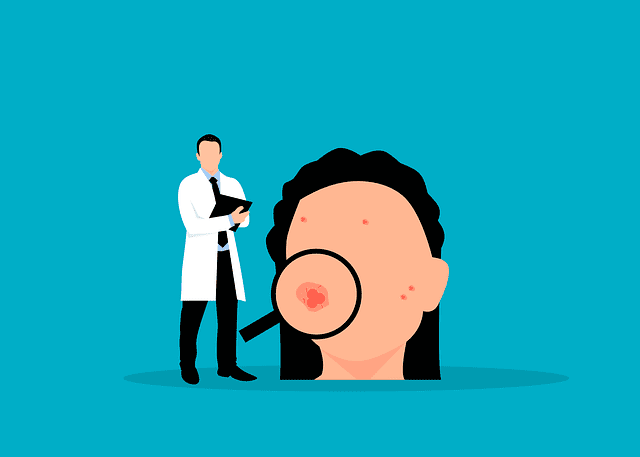Cocaine is a highly addictive illegal drug that affects various aspects of a person’s health, including their skin. While the physical and psychological effects of cocaine use are well known, its impact on skin health often goes unnoticed. Understanding how cocaine affects the body’s systems and its direct impact on the skin is crucial in addressing the unique challenges posed by this drug.

Understanding Cocaine and Its Impact on the Body
Before delving into the effects on skin health, it is important to grasp the basics of cocaine and its chemical composition. Cocaine is derived from the coca plant leaves and is typically a white powder. It is known for its stimulant properties and ability to rapidly increase dopamine levels, a neurotransmitter associated with pleasure.
This surge in dopamine leads to feelings of euphoria and heightened energy levels. Unfortunately, the short-lived effects of cocaine come at a high cost to the body, including various health repercussions.
The Chemical Composition of Cocaine
Cocaine is a powerful stimulant due to its chemical structure. It is classified as a tropane alkaloid and acts primarily by inhibiting the reuptake of certain neurotransmitters, such as dopamine, norepinephrine, and serotonin. This mechanism of action results in an increased availability of these neurotransmitters in the brain, leading to the desirable effects experienced by users.
Furthermore, the quick absorption of cocaine through the nasal passages or when smoked allows it to rapidly reach the bloodstream and exert its effects throughout the body.
How Cocaine Affects the Body’s Systems
The effects of cocaine on the body are far-reaching and impact various physiological systems. The cardiovascular system, for instance, experiences elevated heart rate and blood pressure, increasing the risk of heart attacks, strokes, and other cardiovascular complications.
Cocaine also affects the respiratory system by constricting the blood vessels in the lungs, decreasing oxygen supply, and potentially leading to respiratory distress.
When the immune system is compromised by cocaine use, making individuals more susceptible to infections and impairing the body’s ability to heal itself properly. Moreover, the impact of cocaine on the central nervous system cannot be overlooked. Cocaine use alters the brain’s reward circuitry, leading to long-term changes in behavior and addiction. The repeated use of cocaine can result in tolerance, meaning that higher doses are required to achieve the same effects. This can lead to a dangerous cycle of escalating drug use and increased risk of overdose.
Furthermore, the gastrointestinal system is also affected by cocaine use. The drug can cause a decrease in appetite and weight loss due to its stimulant properties. Prolonged cocaine use can also lead to gastrointestinal ulcers and other digestive issues.
Another significant impact of cocaine on the body is its effect on the liver. Cocaine use can lead to liver damage and even liver failure. The liver plays a crucial role in detoxifying the body, and the introduction of cocaine burdens this vital organ.
Additionally, the musculoskeletal system is not spared from the negative effects of cocaine. Chronic cocaine use can lead to muscle wasting, weakness, and bone density loss. This can result in increased susceptibility to fractures and other musculoskeletal injuries.
Can cocaine use affect the reproductive system?
In males, cocaine can lead to erectile dysfunction and decreased sperm production. In females, cocaine use can disrupt the menstrual cycle and lead to fertility issues.
Lastly, the psychological impact of cocaine use cannot be ignored. Cocaine addiction can lead to severe mental health disorders like depression, anxiety, and psychosis. The constant pursuit of the drug can consume an individual’s life, leading to strained relationships, financial difficulties, and legal problems.
In conclusion, cocaine’s impact on the body is extensive and far-reaching. From cardiovascular and respiratory complications to immune system impairment and psychological disorders, the consequences of cocaine use are severe. It is crucial to understand these effects in order to raise awareness and promote prevention and treatment efforts.
Cocaine and Skin Health: A Complex Relationship
While it is well-known that drug abuse can have detrimental effects on overall health, the direct impact of cocaine on the skin is often underestimated. When it comes to cocaine use and skin health, there are two primary aspects to consider: the direct effects of the drug on the skin and the increased risk of skin infections associated with cocaine use.
Cocaine’s Direct Impact on Skin
Direct contact between cocaine and the skin can cause a range of dermatological issues. Skin conditions such as dermatitis, eczema, and contact allergies have been reported among regular cocaine users. These conditions may manifest as redness, itching, and inflammation, adding to the physical discomfort experienced by individuals already grappling with drug addiction.
Moreover, the vasoconstrictive properties of cocaine can lead to compromised blood flow to the skin, resulting in tissue damage and impaired wound healing.
It is important to note that the direct impact of cocaine on the skin can vary depending on the method of administration. For instance, individuals who snort cocaine may experience nasal issues such as chronic rhinitis, nasal septum perforation, and even necrosis of the nasal mucosa.
Additionally, cocaine use can lead to the development of a condition known as “crack hands.” This term refers to the dry, cracked, and blistered skin on the hands caused by the caustic nature of cocaine and the frequent handling of crack pipes.
Cocaine and Skin Infections
In addition to the direct impact of cocaine on the skin, the drug also increases the risk of developing skin infections. The immune system’s weakened state under the influence of cocaine makes it more difficult for the body to fight off external pathogens. It further reduces the effectiveness of the skin as a protective barrier.
Individuals using cocaine may be more prone to developing infections such as cellulitis, abscesses, and even life-threatening necrotizing soft tissue infections. These infections pose immediate health risks and may have long-term consequences, including scarring and disfigurement.
Moreover, the lifestyle associated with cocaine use, including poor hygiene practices, drug paraphernalia sharing, and risky behaviors, further increases the risk of skin infections.
It is worth mentioning that the presence of open wounds, often caused by compulsive skin picking or scratching due to cocaine-induced hallucinations or delusions, can serve as entry points for bacteria and other pathogens, leading to localized or systemic infections.
Furthermore, the use of contaminated cocaine, which may be adulterated with various substances, including bacteria or fungi, can directly introduce pathogens to the skin, further increasing the risk of infections.
The relationship between cocaine use and skin health is multifaceted, involving both direct effects on the skin and an increased susceptibility to infections. Understanding these complexities is crucial for healthcare professionals in providing comprehensive care to individuals struggling with drug addiction.

The Long-Term Effects of Cocaine Use on Skin
While the immediate impact of cocaine on skin health is concerning, the long-term effects are equally alarming. Chronic cocaine use can lead to persistent skin conditions and accelerate aging, leaving lasting visible marks on the skin.
It is important to understand the various chronic skin conditions that are associated with cocaine use. Among chronic cocaine users, conditions such as acne rosacea, purpura, and livedo reticularis are often observed.
Chronic Skin Conditions Associated with Cocaine Use
Acne rosacea is a common skin condition characterized by persistent redness, flushing, and pustules on the face. The inflammation caused by cocaine use. It can exacerbate this condition, leading to chronic discomfort and self-consciousness.
Purpura, another skin condition commonly seen in chronic cocaine users, manifests as small bleeding spots under the skin. These spots can appear anywhere on the body and are a result of blood vessels becoming fragile and easily damaged due to cocaine’s vasoconstrictive properties.
Livedo reticularis, on the other hand, causes mottled purplish-blue discoloration, resembling a lace-like pattern on the skin. This condition occurs due to the constriction of blood vessels, resulting in poor circulation and oxygenation of the skin.
These chronic skin conditions not only impact a person’s physical appearance but can also have profound psychological effects, further complicating the recovery process. Individuals may experience feelings of shame, embarrassment, and low self-esteem, making it even more challenging to break free from the cycle of addiction.
Aging and Skin Damage from Cocaine Use
In addition to chronic skin conditions, cocaine use accelerates aging, leaving individuals with prematurely aged skin.
Collagen, a protein responsible for maintaining skin elasticity and firmness, deteriorates at a faster rate in cocaine users. This often results in the formation of fine lines, wrinkles, and sagging skin. The loss of collagen also contributes to a dull complexion, making the skin appear lackluster and tired.
Furthermore, the overall poor health of chronic cocaine users, combined with lifestyle factors such as inadequate sleep and poor nutrition, can contribute to an accelerated decline in skin quality. The body’s ability to repair and regenerate skin cells is compromised, leading to a more pronounced and visible aging process.
It is crucial to recognize the long-term effects of cocaine use on the skin, as they serve as a stark reminder of the damage that substance abuse can inflict on both physical and mental well-being. Seeking help and support for addiction is essential for overall health and preserving the vitality and appearance of the skin.
The Recovery Process: Healing Skin After Cocaine Use
While the impact of cocaine on skin health can be distressing, there is hope for recovery and improvement. Treating skin damage resulting from cocaine use involves a multifaceted approach that encompasses medical treatments and lifestyle changes.
Medical Treatments for Skin Damage from Cocaine
Medical interventions are crucial in addressing specific skin conditions attributable to cocaine use. Dermatologists may prescribe topical medications, oral antibiotics, or specialized treatments tailored to individual needs. These interventions aim to alleviate symptoms, promote healing, and restore skin health.
Lifestyle Changes to Improve Skin Health
Beyond medical treatments, adopting healthy lifestyle changes is essential for overall skin health. Individuals in recovery from cocaine addiction should prioritize self-care routines that include regular gentle cleansing, moisturization, and sun protection. A balanced diet rich in essential nutrients, regular exercise, and adequate sleep play a vital role in rejuvenating the skin.
Moreover, seeking professional help, such as counseling or support groups, can assist individuals in managing addiction and addressing the underlying emotional and psychological aspects that contribute to drug use.
Prevention and Education: The Key to Protecting Skin Health
Preventing the damaging effects of cocaine on skin health starts with comprehensive education and awareness campaigns. Educating individuals about the dangers and consequences of cocaine use is crucial in curbing drug initiation and promoting informed decision-making.
The Role of Prevention in Skin Health
Prevention efforts should focus not only on the physical and psychological consequences of cocaine but also its impact on skin health. By highlighting the often overlooked aspect of skin damage, prevention initiatives can empower individuals to make choices that prioritize their well-being.
Educating About the Dangers of Cocaine Use to Skin Health
Healthcare providers, educators, and community organizations play a vital role in educating the public about the unseen effects of cocaine on skin health. By raising awareness about the potential long-term consequences, promoting treatment options like the evidence-based drug therapy programs at inspire Malibu in California, and providing resources for support, these stakeholders can contribute to healthier individuals and communities.
Understanding the direct impact of cocaine on the skin, the increased risk of skin infections, and the long-term consequences is crucial in addressing the complex challenges faced by individuals using this drug.
Emphasizing prevention, promoting education, and offering comprehensive support can protect skin health and ultimately contribute to society’s overall well-being.





